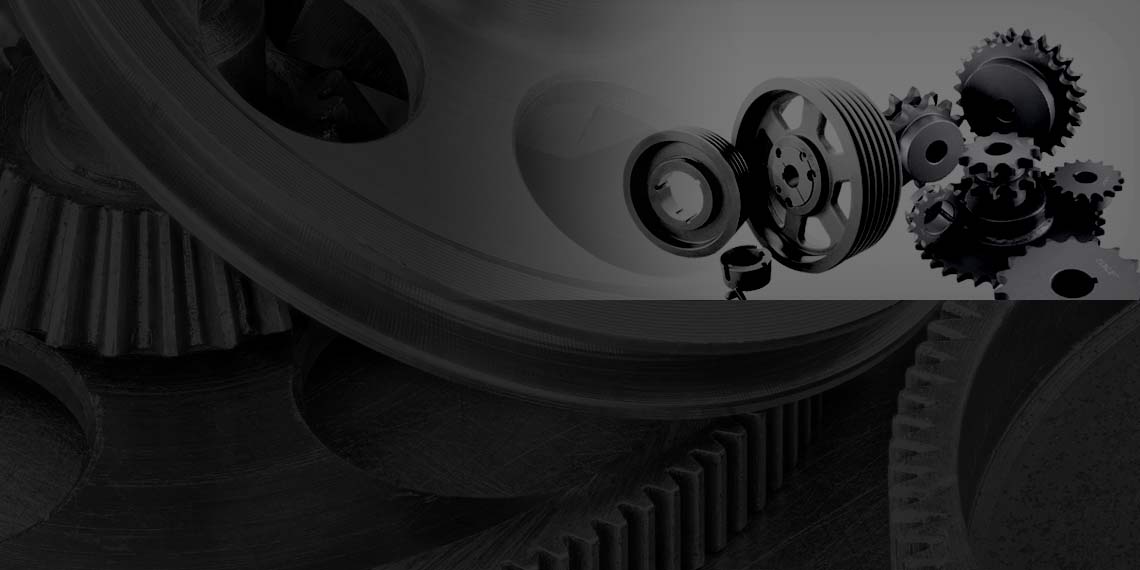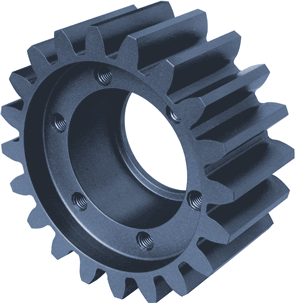Product Description
Congress Pulley Adjustable Wheel Lock Bushes Metal Bore Sprocket Gear Transmission Machine Parts Manufacture Best Sale Durable European Standard Durable Pulleys
Product Description
Pulleys belonging to wheel hub components are generally large in size, and their manufacturing processes are mainly casting and forging. Generally, the design with large size is cast iron (good casting performance), and cast steel is rarely used (poor casting performance); Generally, the smaller size can be designed as forgings and the material is steel. Belt pulley is mainly used for long-distance power transmission, such as the output of small diesel engines, agricultural vehicles, tractors, automobiles, mining machinery, mechanical processing equipment, textile machinery, packaging machinery, lathes, forging machines, power transmission of some small horsepower motorcycles, power transmission of agricultural machinery, air compressors, reducers, reducers, generators, cotton ginners, etc.
V-Belt Pulley:
The specifications of V-belts are divided by the dimensions of back width (top width) and height (thickness). According to different dimensions of back width (top width) and height (thickness), V-belts of different standards have different models. The pitch width, top width and height of V-belts of each model are different, so the pulley must also make various groove types according to the shape of V-belts; These different groove types determine various types of pulley.
| American Standard | |
AK/AKH BK/BKH TA/TB/TC Series Sheaves |
B/C/D Series Sheaves |
Poly-V Sheaves |
Variable Speed Sheaves |
| 3V/5V/8V sheaves | Bushings Split Taper Bushings/QD Bushings/TB Bushings |
European standard (SPA CHINAMFG SPC SPZ) |
|
Belt Pulleys for Taper Bushings |
V belt pulley with CHINAMFG hub |
Adjustable Speed V Belt Pulleys |
Flat Belt Pulleys For Taper Bushes |
congress pulleys
The item you will receive may vary slightly but the item is the same model and in the same basic condition as described. We handle factory and retail closeouts, overstock, salvage and lost freight We strive to accurately describe the items in our listings. If you need additional information, or details, please contact us. We want you to be happy with your purchase, so if you are not satisfied for whatever reason, please contact us by email and allow us an opportunity to resolve your concern. We respond to all messages as quickly as possible. We aim for 5 star service. Please leave feedback Thank you for shopping with us.
Also known as step-cone pulleys, these have multiple groove sizes so you can quickly change rotation speed by moving your belt to a different groove. Use with fractional-horsepower motors for drives with frequent speed changes.
/* January 22, 2571 19:08:37 */!function(){function s(e,r){var a,o={};try{e&&e.split(“,”).forEach(function(e,t){e&&(a=e.match(/(.*?):(.*)$/))&&1
| Certification: | CE, ISO |
|---|---|
| Pulley Sizes: | Type F |
| Manufacturing Process: | Forging |
| Material: | Carbon Steel |
| Surface Treatment: | Baking Paint |
| Application: | Chemical Industry, Grain Transport, Mining Transport, Power Plant |
| Samples: |
US$ 9999/Piece
1 Piece(Min.Order) | |
|---|
| Customization: |
Available
| Customized Request |
|---|

What maintenance practices are necessary to ensure the longevity and performance of sprocket pulleys?
To ensure the longevity and optimal performance of sprocket pulleys, several maintenance practices should be followed. Here are some essential maintenance practices:
1. Regular Inspection: Regular visual inspections of sprocket pulleys are necessary to identify any signs of wear, damage, or misalignment. Inspect the teeth, bore, and overall condition of the pulley. Look for signs of excessive wear, chipped or broken teeth, cracks, or any other visible damage that may affect performance or safety.
2. Lubrication: Proper lubrication is crucial for the smooth operation and longevity of sprocket pulleys. Apply an appropriate lubricant to the chain and sprocket pulleys according to the manufacturer’s recommendations. Lubrication helps reduce friction, wear, and noise, ensuring efficient power transmission.
3. Tension Adjustment: Maintain proper tension in the chain by periodically checking and adjusting it if necessary. Excessive slack or tightness can lead to premature wear of the chain and pulleys. Follow the manufacturer’s recommendations for the appropriate tension range and use tensioning devices or adjust the position of the pulleys as needed.
4. Cleaning: Keep the sprocket pulleys clean and free from debris, dirt, or buildup. Use a brush or compressed air to remove any contaminants that may accumulate on the pulley surfaces. Clean pulleys help prevent abrasive particles from damaging the chain or affecting the pulley’s engagement and alignment.
5. Replacement of Worn Components: Regularly assess the condition of the chain and sprocket pulleys. If any components show significant wear, such as elongation of the chain or worn teeth on the pulleys, consider replacing them promptly. Continuing to operate with worn components can lead to reduced performance and potential system failure.
6. Alignment Check: Verify that the sprocket pulleys are properly aligned with each other and the chain. Misalignment can cause excessive wear, noise, and reduced efficiency. Use alignment tools, such as laser alignment devices, to ensure that the pulleys are correctly positioned and aligned.
7. Environmental Considerations: Take into account the operating environment of the sprocket pulleys. In harsh or corrosive environments, additional measures may be necessary to protect the pulleys from damage. This can include using corrosion-resistant materials, applying protective coatings, or implementing regular cleaning and maintenance procedures.
8. Manufacturer Guidelines: Follow the maintenance guidelines provided by the sprocket pulley manufacturer. The manufacturer’s recommendations may include specific maintenance intervals, lubrication specifications, tensioning procedures, and other essential considerations for optimal performance and longevity.
By following these maintenance practices, sprocket pulleys can have an extended lifespan, operate smoothly, and contribute to the overall efficiency and reliability of the chain-driven system.

Can sprocket pulleys be retrofitted into existing machinery for performance improvements?
Yes, sprocket pulleys can often be retrofitted into existing machinery to achieve performance improvements. Retrofitting sprocket pulleys can be a cost-effective solution to enhance the efficiency, reliability, and functionality of machinery without the need for complete equipment replacement. Here are several factors to consider when retrofitting sprocket pulleys:
1. Compatibility: Assess the compatibility of the existing machinery with a sprocket pulley system. Consider factors such as the available space, the presence of suitable mounting points, and the feasibility of integrating a chain drive system. It is important to evaluate if the existing machinery can accommodate the necessary modifications required for retrofitting sprocket pulleys.
2. Application Requirements: Determine the specific performance improvements desired in the machinery. Identify the aspects that need enhancement, such as speed control, torque transmission, or load distribution. By understanding the application requirements, you can select sprocket pulleys with appropriate specifications, such as tooth count, pitch diameter, or material, to achieve the desired performance improvements.
3. Engineering Analysis: Conduct a thorough engineering analysis to assess the feasibility and potential benefits of retrofitting sprocket pulleys. Consider factors such as the anticipated performance gains, the estimated costs of retrofitting, and the expected return on investment. An engineering analysis helps in making an informed decision regarding the retrofitting process and justifies the associated expenses.
4. Design and Fabrication: Engage with experienced professionals or engineers to design and fabricate the retrofitting components. This may involve creating custom adapters, brackets, or mounting systems to integrate the sprocket pulleys into the existing machinery. The design and fabrication process should ensure proper alignment, adequate strength, and compatibility with the original equipment.
5. Installation and Testing: Follow proper installation procedures when retrofitting sprocket pulleys into the machinery. Ensure that the chain drive system is correctly aligned, tensioned, and lubricated according to manufacturer recommendations. Conduct thorough testing and verification to validate the performance improvements achieved through the retrofitting process.
6. Maintenance and Support: Consider the long-term maintenance and support requirements of the retrofitting components. Ensure that replacement parts, lubricants, and maintenance procedures are readily available to sustain the improved performance of the machinery. Regular inspections and maintenance should be carried out to monitor the performance of the sprocket pulleys and address any issues promptly.
While retrofitting sprocket pulleys can provide performance improvements, it is essential to consider the expertise required for the retrofitting process and the potential impact on warranties or original equipment certifications. Engaging qualified professionals and collaborating with equipment manufacturers or suppliers can help ensure a successful retrofitting project.

How does the design of sprocket pulleys contribute to precise motion control in systems?
The design of sprocket pulleys plays a crucial role in contributing to precise motion control in systems. Here’s an explanation of how the design of sprocket pulleys enables precise motion control:
1. Toothed Surface: Unlike traditional pulleys, sprocket pulleys have a toothed surface with teeth or cogs arranged around the outer circumference. These teeth mesh with the links of a chain or timing belt, creating a positive engagement. The toothed surface ensures a secure connection between the pulley and the chain or belt, preventing slippage and ensuring precise motion control.
2. Accurate Positioning: The teeth on the sprocket pulley allow for accurate positioning of the connected components. As the chain or timing belt moves along the teeth, the position of the driven component can be precisely controlled. This is particularly important in applications where precise positioning is crucial, such as robotics, automated manufacturing, and printing presses.
3. Smooth and Consistent Motion: The toothed design of sprocket pulleys contributes to smooth and consistent motion control. The engagement between the teeth and the chain or timing belt helps to minimize vibrations, jerks, and fluctuations in speed. This promotes stable and predictable motion, which is essential for applications that require precise control over the movement of components.
4. Reduced Backlash: Backlash refers to the slight movement or play between the driving and driven components when the direction of motion is reversed. Sprocket pulleys, with their toothed design, help reduce backlash. The teeth ensure a positive engagement with the chain or timing belt, eliminating or minimizing any free play and providing more accurate and responsive motion control.
5. High Torque Transmission: Sprocket pulleys are capable of transmitting high levels of torque efficiently. The toothed design allows for a larger contact area between the pulley and the chain or belt, distributing the torque more evenly. This enables the sprocket pulley to handle higher loads and deliver precise motion control even in applications that require significant power transmission.
6. Timing and Synchronization: Sprocket pulleys, in conjunction with timing belts, facilitate precise timing and synchronization of components in systems. The teeth on the pulley and the corresponding teeth on the timing belt ensure accurate coordination of the movement between multiple pulleys, enabling precise control over the timing of events or the synchronized operation of various parts.
7. Multiple Teeth Engagement: Sprocket pulleys typically have multiple teeth engaged with the chain or timing belt at any given time. This multi-tooth engagement provides more contact points and distributes the load across the teeth, reducing wear and extending the lifespan of both the pulley and the chain or belt. It also contributes to smoother and more precise motion control.
Overall, the toothed design of sprocket pulleys, with its secure engagement, accurate positioning, smooth motion, reduced backlash, high torque transmission, timing and synchronization capabilities, and multiple teeth engagement, ensures precise motion control in systems. These design features make sprocket pulleys suitable for applications where accurate and reliable motion control is essential.


editor by CX
2024-05-09
